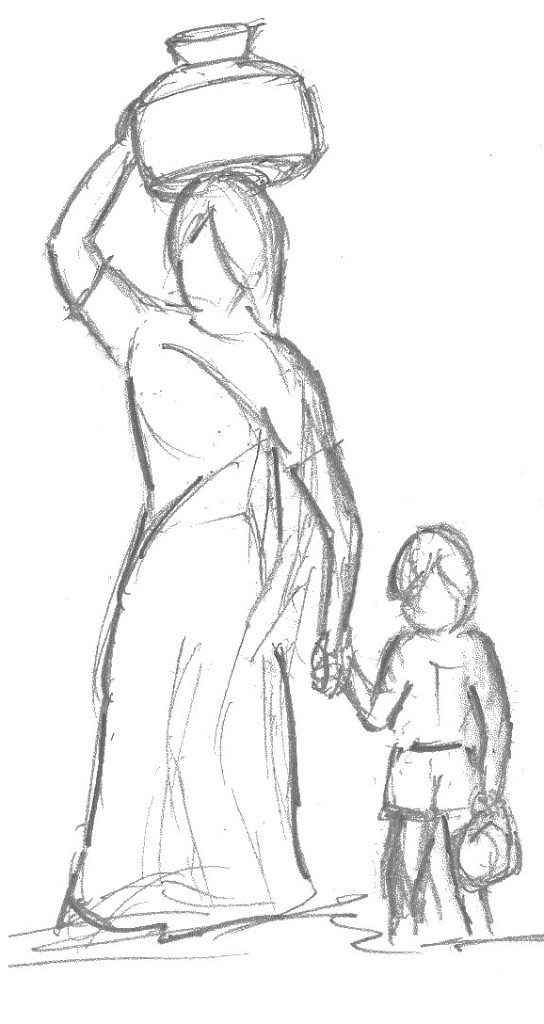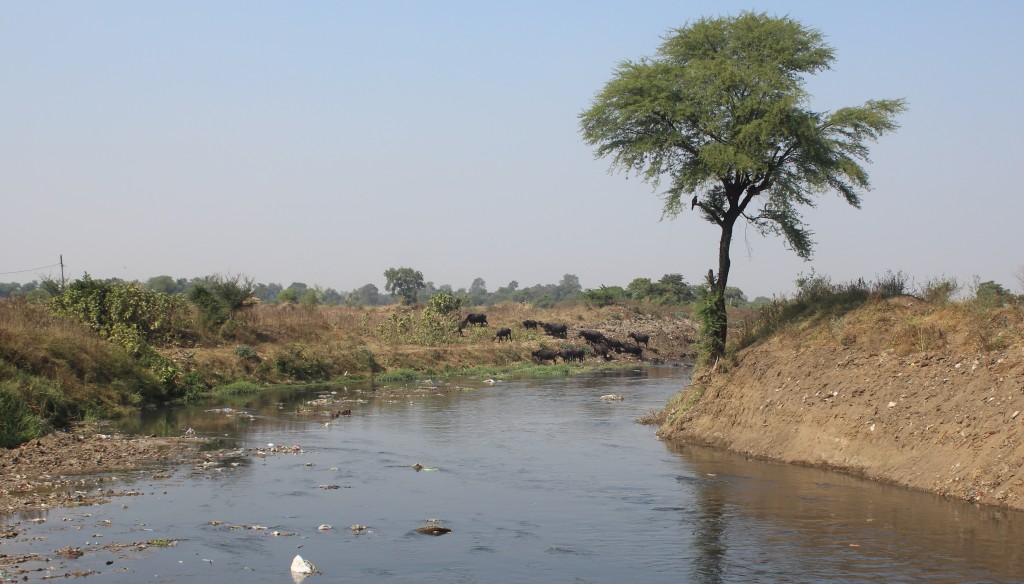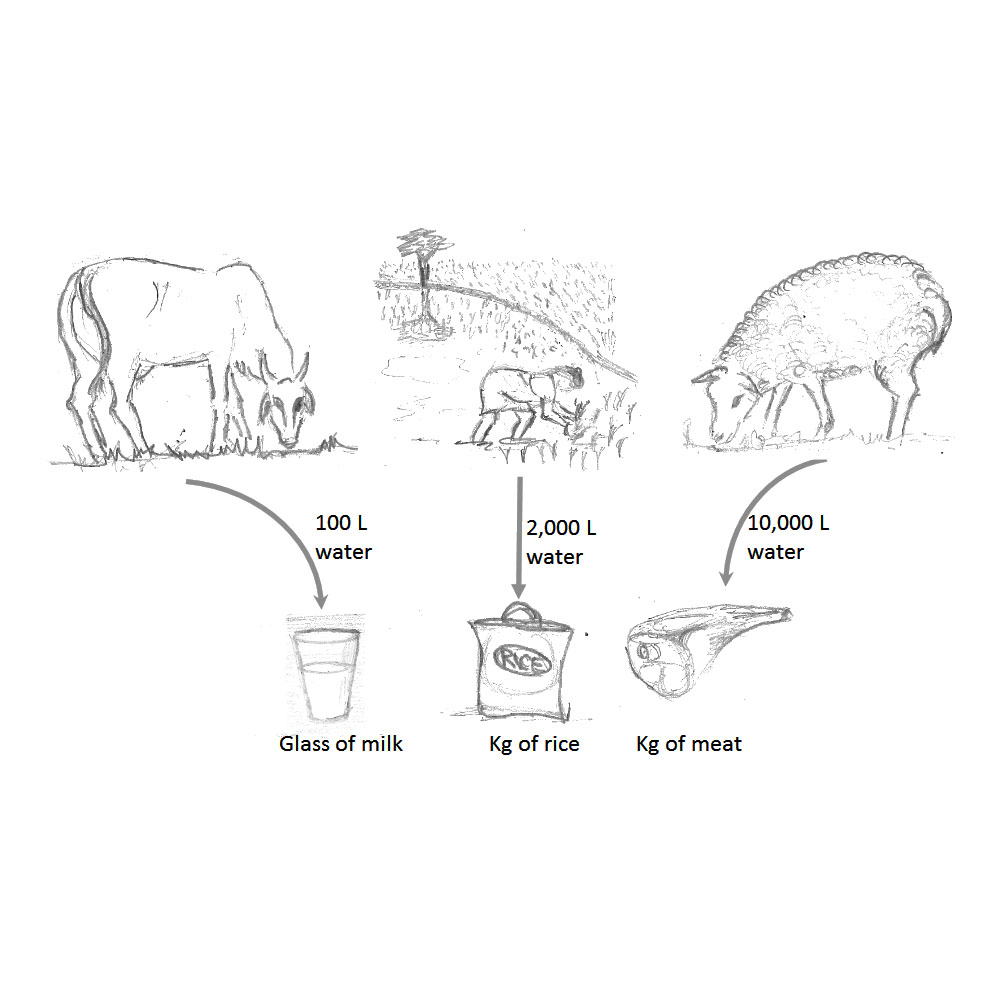 We were perhaps the last batch that saw a functioning boat club in the IIT campus. I remember taking out a row boat from the now defunct boat house on Powai Lake and going around ‘Croc Island’ where the reptilians were known to nest. We lost that privilege by the end of my first year as the boat dock became overwhelmed with water hyacinth that was rapidly spreading in the lake stimulated by the high levels of nutrients coming in with untreated wastewater. Such loss of privilege to services from a water body plays out at a national scale as we slowly resign to the decaying quality, unsightly trash, stench, loss of natural habitat and function. Of course in IIT we would not give in easily without a fight. So a bunch of us teamed up and with the help of the then director of CESE, Dr. Khanna, started a research project on the eradication of the water hyacinth! We brought in an expert and embarked on a biological control experiment by introducing a hyacinth-eating weevil (a type of beetle). While the weevil finally lost to nutrient-driven explosion of the water plants, the engagement made a lasting impact in our lives and several of us in that group went on to work in the field of water.
We were perhaps the last batch that saw a functioning boat club in the IIT campus. I remember taking out a row boat from the now defunct boat house on Powai Lake and going around ‘Croc Island’ where the reptilians were known to nest. We lost that privilege by the end of my first year as the boat dock became overwhelmed with water hyacinth that was rapidly spreading in the lake stimulated by the high levels of nutrients coming in with untreated wastewater. Such loss of privilege to services from a water body plays out at a national scale as we slowly resign to the decaying quality, unsightly trash, stench, loss of natural habitat and function. Of course in IIT we would not give in easily without a fight. So a bunch of us teamed up and with the help of the then director of CESE, Dr. Khanna, started a research project on the eradication of the water hyacinth! We brought in an expert and embarked on a biological control experiment by introducing a hyacinth-eating weevil (a type of beetle). While the weevil finally lost to nutrient-driven explosion of the water plants, the engagement made a lasting impact in our lives and several of us in that group went on to work in the field of water.
Most of us take water for granted. But for nearly a billion people in the world, access to safe drinking water is a daily challenge. The excess of water we see around us – flowing tap water in most urban homes and images from the recent monsoons and floods–seem to desensitise us from the need to care for water. There appears to be plenty going around. The problem is that even with this plenty, there are a lot of takers. Water for drinking and washing is not all we need. Nearly every action of ours is linked directly or indirectly with a large industrial consumption of water. For example, a glass of milk can be equivalent to 200 L of water, a kilo of rice equivalent to 2000L of water, a kilo of lamb 10,000L! So, while we drink about 2L of water per day, our implicit use of water is about 2500L/day for an average Indian, and a whopping 7000L/day for an average American! What does 2500L/day for each person mean for the whole of India? That is close to the entire flow rate of the Ganga and the Brahmaputra combined! Scholars have given various names to the implicit use of water: ‘virtual water’ or ‘water footprint’. Starting from our ancient civilisations, we have recognised humankind’s tremendous dependence on water, continue to be challenged by it, and often fight over it.
A glass of milk can be equivalent to 200 L of water, a kilo of rice equivalent to 2000 L of water, a kilo of lamb 10,000 L! So, while we drink about 2 L of water per day, our implicit use of water is about 2500 L/day for an average Indian, and a whopping 7000 L/day for an average American!
The use of water is a double-edged sword – there are impacts from the diversion of the large volumes we need for consumption and even greater impacts when we release back the large volumes of wastewater into the rivers. Successful civilisations have found ways to manage their waters efficiently. From the amazing sanitation systems of the Indus Civilisation, to the magnificent aqueducts of the Roman Empire, and the large-scale treatment plants of today, when the political leadership has given it priority, engineers have innovated ways to make it possible.
Our late Prime Minister Indira Gandhi put it eloquently: “Poverty is the worst polluter”. But, now that we have started to address the challenge of poverty and India is an emerging economy, have we been able to do enough to keep our waters clean? It is heartening to hear from our current leadership about prioritising the clean-up and revitalisation of our major rivers. But are we truly up to the challenge? We have diverted away a big part of the water, dammed up its flow at frequent intervals, destroyed the watershed that nourished it, and used it to convey our waste. Even when we go to worship the river, we end up dumping waste into it. With the best of intentions, ironically, our current Prime Minister and his ensemble kick-started the new plan to clean up the Ganga by performing a puja and tossing flowers and offerings! (NDTV article) We need no less than a cultural revolution to clean up the Ganga! A few thousand crores here and there are likely noted going to make it, cosmetic surgery perhaps. We have a tendency to admire and revere our old cultural traditions, pilgrimage in millions to bathe in the river, dump flowers, waste, and even partly cremated dead bodies as part of our religious traditions. But no great civilisation can prosper without adapting to the changing needs. Our cultural practices have to change with time. What were possible, and even sustainable, practices 1000 years ago with a population of only a fraction of what we have today, can no longer be supported by the rivers today and we can see it vividly in its decline.

The picture above is of a small river in Nagpur I took last year where we were setting up sampling stations to monitor for toxic chemicals widely used for mosquito control. Unfortunately, the river is no more than an open sewer at this time, with trash all over and devoid of vegetation, which ends up causing massive erosion along the banks. While there is water in the river, the quality is so degraded that it is not only unsuitable for drinking, but also unsuitable for irrigation, industrial use, or supporting the aquatic ecosystem. The dissolved oxygen was practically zero in the river! There are no fish in some of these degraded rivers, and with the fish gone, there are no predators to be seen, like eagles, monitor lizards and otters. The highly endangered Ganges River Dolphin is a rare sight now! Then there are things that we do not see: metals and other toxic chemicals that not only impact aquatic life, but also human health. A big part of our food supply still originates from our water bodies and toxic chemicals like mercury and pesticides accumulate in the fish we eat causing long-term health issues like cancer.
We have a tendency to admire and revere our old cultural traditions, pilgrimage in millions to bathe in the river, dump flowers, waste, and even partly cremated dead bodies as part of our religious traditions. But no great civilisation can prosper without adapting to the changing needs. Our cultural practices have to change with time.
The solutions are not all technological. India always had access to the appropriate technology and enough qualified engineers to do this right. What we need is political will and leadership that is able to mobilise the masses into a mindset that changes social practice to what is sustainable today. Not surprisingly, when you look at who has been most instrumental in bringing change in India when it comes to water, the internationally recognised names that come up (winners of the prestigious World Water Prize) are all social/political activists! – Rajendra Singh (2015) for his innovative water restoration efforts and improving water security in rural India; Bindeshwar Pathak (2009), founder of Sulabh International, for his work in the sanitation field and social justice; Centre for Science and Environment under Sunita Narain(2005) for its contribution to build a water-literate society; Madhav Atmaram Chitale (1993) for getting India’s decision makers and strategic planners to think of water as a resource whose quality and availability need to be safeguarded – a tall order indeed!
What we need is political will and leadership that is able to mobilise the masses into a mindset that changes social practice to what is sustainable today.
I am optimistic that we will be able to do this right. Every society goes through a self-realisation and re-evaluation of its priorities. In the heyday of manufacturing in Pittsburgh, USA, one of the rivers was so polluted with floating oil that it would often catch fire! This has changed drastically now. With prosperity and growing awareness, the citizens have demanded better and political will has followed through. I see that happening in our country as well, and we are already seeing improvements in many places. I just hope that we learn from others’ mistakes and are able to move quicker through the process of renewal of our thinking about water.Perhaps there is an opportunity for us at IITB to begin an initiative to restore the glory of our namesake lake, use it as an educational opportunity for the students, and set an example for the rest of the country to follow.

1 comment
Have you heard of lake water remediation by injecting oxygen and/ozone deep in the lake to increase oxygen content and kill off the weed and algae. Industrial gas companies have this technology and it has been tried in the US. This could be a solution to Powai Lake’s algae and weed problem – although the costs may be high but it may be worth it. It is possible that on a large lake the process may not be cost effective.